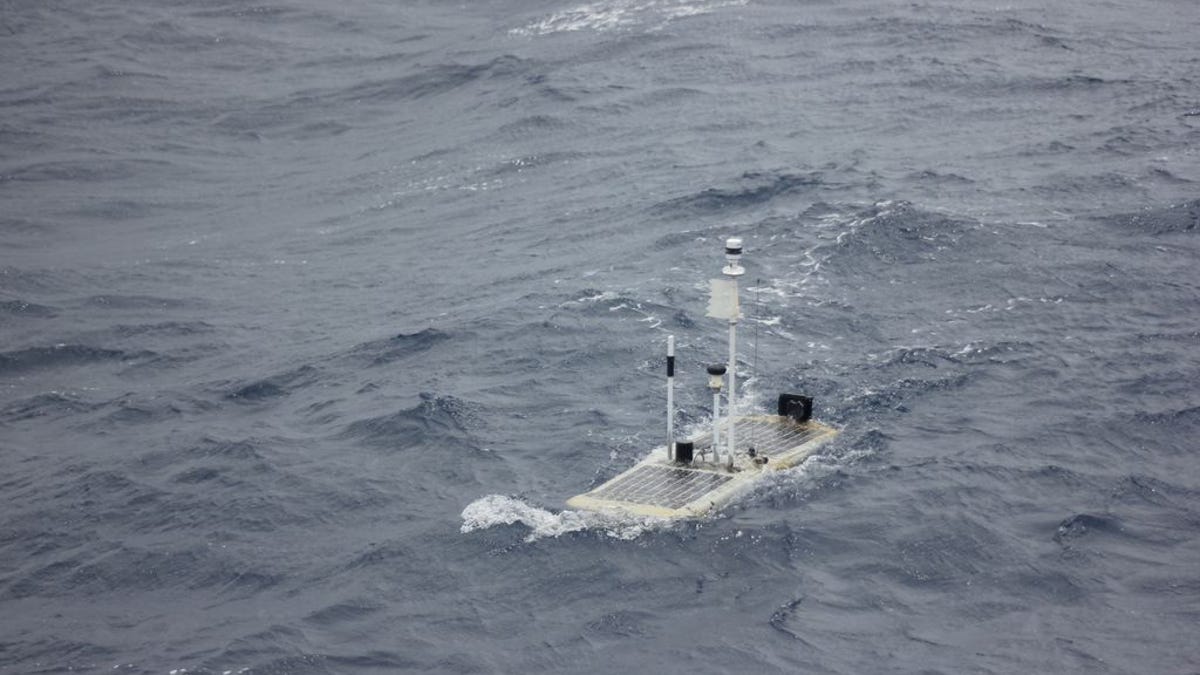Science robot ends Guinness record-breaking ocean journey
After 9,000 miles, the autonomous robot Papa Mau completed its trip across the ocean having gathered valuable scientific data along the way.

After a record-breaking 9,000-mile journey across the ocean, a small autonomous robot recently arrived in Australia having collected and transmitted a wealth of scientific data that could lead to a better understanding of the world's seas.
On November 17, 2011, a Silicon Valley startup called Liquid Robotics launched four of its Wave Glider robots from San Francisco, two of which were heading toward Australia and the other two on their way to Japan. The hope was that the Wave Gliders, which are designed to travel across the globe without fuel or outside propulsion, would set the Guinness World Record for longest distance traveled on the Earth's surface by a robot.
Yet while the robot that arrived in Australia most likely did set the mark, breaking records is really just a "stunt" in the name of science, James Gosling, one of the creators of the Java programming language and now Liquid Robotics' chief software architect, told CNET last year.
In other words, the goal of the project has been to attract attention to the robots' real work -- gathering the kind of data on the oceans that's never been possible before, and that can be used to help scientists, educators, students, industry, and others have better knowledge of the seas than has been possible before.
Indeed, a secondary element of the project has been to open up the data collected to anyone who wants it and to award a $50,000 research grant to the scientist with the most interesting proposals for how to use them.
According to Graham Hine, Liquid Robotics' senior vice president of product management, the Wave Glider Papa Mau made land in Australia's Hervey Bay on November 20, beating its three launch companions across the seas. Hine said that one is likely to hit Australia in February, while another is thought likely to make it to Japan in June. A fourth was pulled out of the water due to mechanical issues.
Hine said the journey was a scientific success, given the data Papa Mau was able to gather along the way. That included data on weather conditions in equatorial waters that was unexpected, as well as an extended look at a 1,200 mile wide algal bloom that gave scientists the ability to capture high-resolution imagery of a little-understood phenomenon. It's "really illuminating for understanding what mid-ocean biology is really like," Hine said.
A key task for the Papa Mau was to travel slowly and steadily through areas of the sea that have been little studied in the past. Hine said such areas have been observed with sensors placed on buoys and from passing ships, but never before at the scope and scale of what the Wave Gliders have been able to do. "It's very dense spatial measurement of that information," Hine said, "taking a lot of readings over relatively slow transit. That's a new way of measuring the ocean."
Hine also said that Liquid Robotics has named five finalists in the PacX Challenge -- the competition for the $50,000 research grant. One winner will be named at a later date.
Papa Mau before Benjamin
To Hine, one of the most interesting aspects of PacX project is that Papa Mau arrived in Australia so much earlier than its compatriot Benjamin. Though the Liquid Robotics team was aware that Wave Glider performance could be affected by a variety of things, including getting wrapped up in seaweed.
But while Papa Mau arrived in nearly perfect shape, save for having its paint worn out and being covered in barnacles, it's not yet clear if Benjamin encountered anything specific that slowed it down, or if it simply caught slow currents. Hine said that he hopes to race the two robots when he has both of them in hand in a bid to see if they perform the same given equal circumstances. But given that they know the precise route each robot took, Hine said that comparing the routes and the data collected will "tell us something about a variety of different oceanographic conditions."
Once all four robots are back in the fold and reconditioned, Hine said they will be launched again on one of a number of possible missions. One is to circumnavigate the Antarctica -- a 16,000-mile trip which would likely require figuring out how to outfit a Wave Glider with more batteries. The other two possible next trips are a trip through the Northwest Passage and a south pole to north pole crossing.

